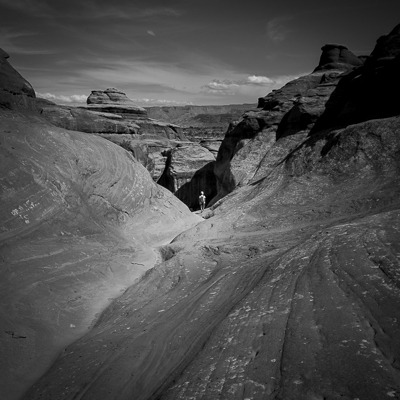Tension
September 2nd, 2019Another basic concept in image composition is tension. What is tension and how does it relate to photography?
When the Microsoft Windows XP development team contacted Charles O'Rear about his image Bliss (see my blog post from Aug 6) he reportedly thought "Were they looking for an image that was peaceful? Were they looking for an image that had no tension?“ (https://en.wikipedia.org/wiki/Bliss_(image)).
To understand tension, imagine a bowl and a marble. If you take the marble and release it near the upper lip of the bowl it’s going to roll down the side and eventually settle and stop right in the middle of the bowl. The center of the bowl is a static place of rest and peace for the marble. If sometime later you walked by the bowl and caught it out of the corner of your eye, you’d see the marble at rest in the bottom, center of the bowl and think ‘all is as it should be’. But, if you walked by and saw the marble NOT in the center but saw it half-way up toward the rim, you’d do a double-take. You’d have to stop and look closely and ask ‘WTF, how is it doing that?’ That’s tension; something that is not at rest or out of balance. Tension is the something that captures and holds a viewers attention.
Consider these two images.

(Canon 5DMII, EF24-105 @ 24mm, 1/180s, f/13, ISO 100)
In this first image Pippa is the focal point and I’ve positioned her dead-center, like the marble in the bottom of the bowl. Creating a restful feeling and an image with very little tension.

(Canon 5DMII, EF24-105 @ 58mm, 1/400s, f/5.6, ISO 800)
Now consider this image of a Thai vendor trying to sell her wares to tourists. The vendor with her wares dominates the center of the image and the tourists are cornered by her along the left edge. The image is very out of balance and–I hope–conveys the tension and pressure a tourist feels at the onslaught of the horde of vendors at any tourist attraction.
Many of the compositional ‘rules’ of photography are designed to help you as the photographer capture tension in your imagery. The rule of thirds suggests putting your subject or focal point about one third of the distance in from one edge. Supposedly this creates an ‘optimal’ about of tension; not too much, not too little
Should all photographs have tension? Clearly the answer is ‘no’. Bliss is virtually tensionless and yet sold for a large, but undisclosed, sum. If you’ve been commissioned to provide photographs for a dentist office, it’s probably best to minimize tension, the patient experiences enough just sitting in the chair.
On the other hand, if you’re photographing environmental abuses you probably want to maximize tension to unsettle your viewers and motivate them to action.
How much tension is enough? I think right amount is whatever it takes to convey the photographer’s vision and mood.
